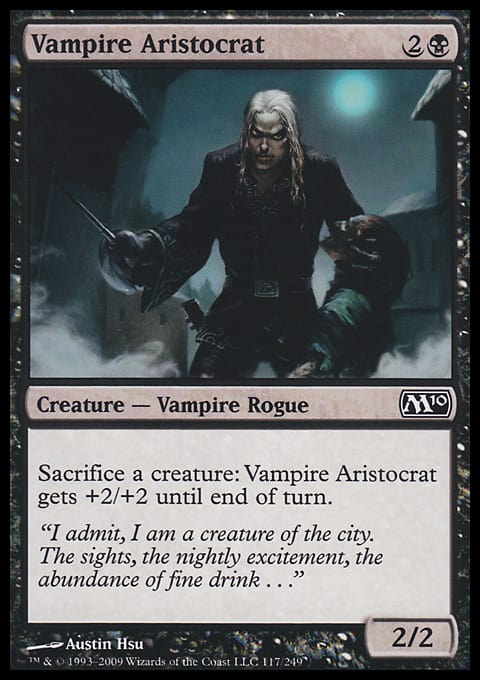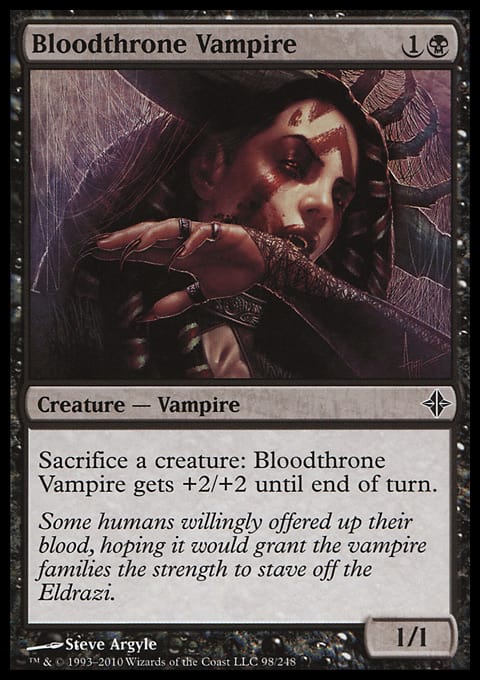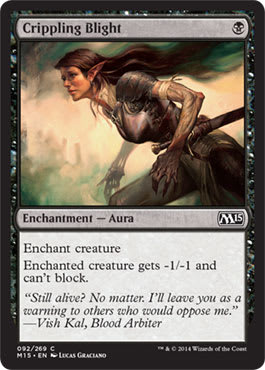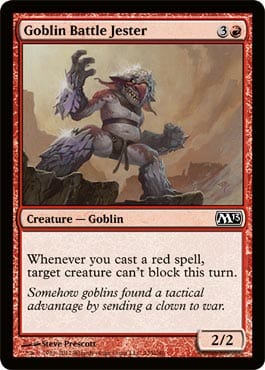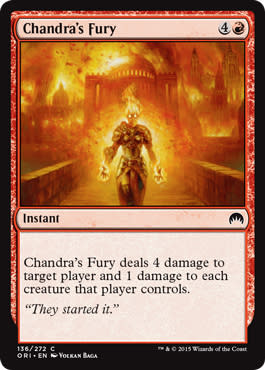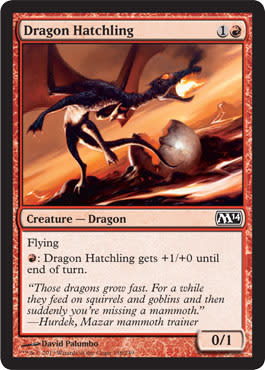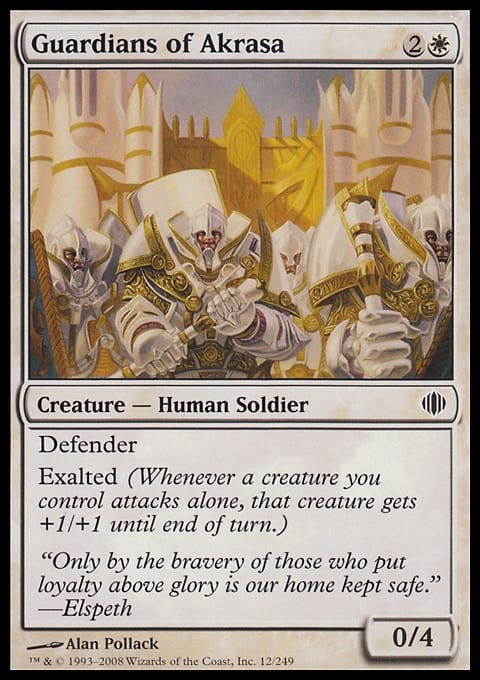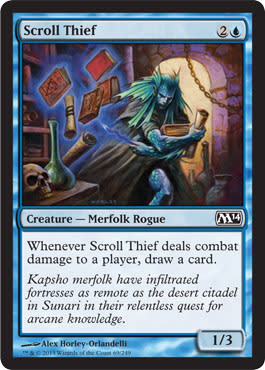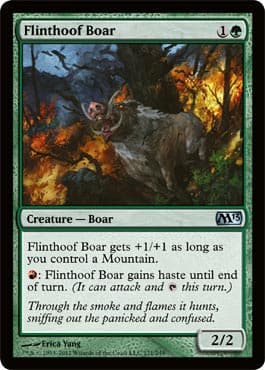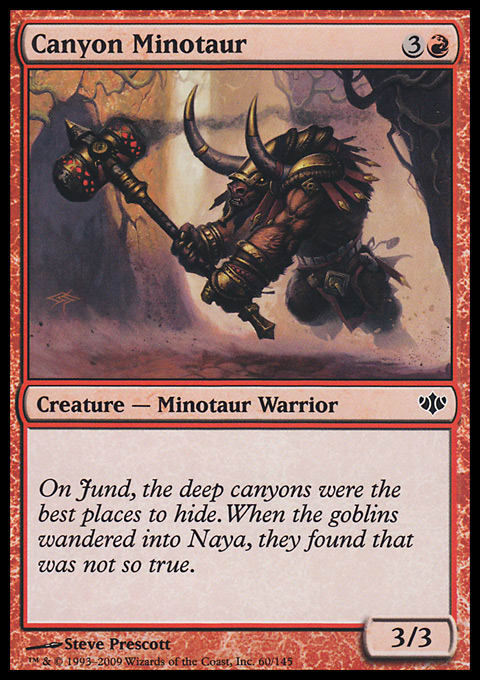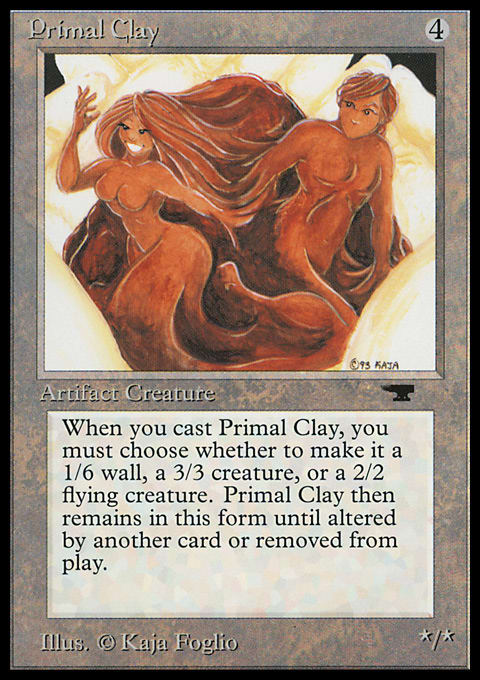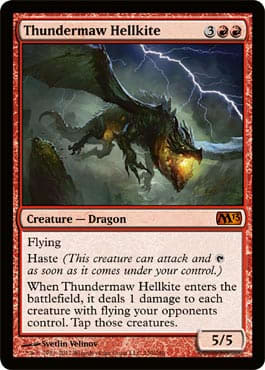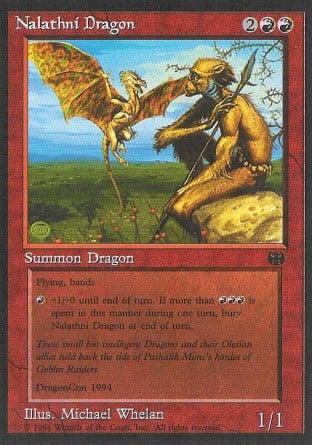As this article’s title may have suggested, we’re back to reviewing Magic 2013. But before we get into that, I want to point out: You only have until midnight (EDT) going into Tuesday, August 14 to submit a design for the planeswalker-making contest I announced in last week’s article!
Back on Track
Anyway, it’s time to talk red. The big thing here is . . . wait, I’m being informed that I left something out: a follow-up to the black edition of this series. Okay, so two weeks ago, I spent an awful lot of time ranting about the non-inclusion of Noble Hierarch in Magic 2013. MaRo had answered a Tumblr question on the matter by saying that he wouldn’t want a team to compromise his or her design vision just to fit in a Modern staple, and I disagreed, but after the article went live, I received this tidbit from a certain Great Designer:
— Ethan Fleischer (@EthanFleischer) August 1, 2012
@julesrobins@gatheringmagic IIRC, Modern wasn't even a format yet when M13 was handed off to development.
Well then, I guess that would explain what looked to me like blatant disregard. I know the good folks at Wizards of the Coast work on things way ahead of time; I just figured the likes of Farseek and Arbor Elf hinting at the shock lands’ return meant Modern was already on the radar.
But Really This Time
That’s quite enough about Noble Hierarch. Now where was I? Ah yes: What makes Magic 2013 such an exciting core set for red? Sure, red isn’t privy to the returning mechanic, but this is the first core set since looting’s become a piece of red’s color pie. The twin additions of Rummaging Goblin and Wild Guess have done a great deal to alleviate the monotony at common. Perhaps most notably, the common Act of Treason has been replaced by the uncommon Mark of Mutiny, thus dismantling this ever-present archetype:
But the bigger impact here isn’t an exclusion, but a reduction of redundancy. When building a core set, it’s important to get most of what each color does represented at common. For instance, white gets the evergreen keywords first strike, lifelink, vigilance, and flying in abundance along with team-pump effects, damage prevention, life-gain, tapping, enchantment destruction, dedicated blockers, Pacifism effects, and small pump effects. Each core set should have at least one common that covers each of these areas, and often, a few will get doubled up on when it makes for good gameplay.
But red’s never had the luxury not to do so. Magic 2010 has three hasty red commons, two for first strike, and two firebreathers, and the trend continues in subsequent editions. Magic 2013, on the other hand, still has two Firebreathing effects, but it is down to one creature with haste and one first strike granter at common. Red’s slice of the color pie is still a bit slimmer than it would ideally be, but the deficiency is far less pronounced now than ever before.
Pick Your Poison
Don’t get me wrong; I’d be happy to discuss the relative abundances of effects in recent core sets all day, but at some point, it may prove productive to consider actually playing the game. What red decks has Development built into the Magic 2013 Limited environment?
Rakdos
Our first archetype falls into an entirely different camp than the all-removal B/R control deck we discussed a couple of weeks ago. As Crimson Muckwader suggests, this format’s Rakdos decks have the potential to become aggressive. Sure, with a ton of removal, you could keep anything bigger than your Canyon Minotaur from sticking around, but while you’re at it, why not just keep your opponent from being able to defend against a horde of 2-drops?
Well, for one thing, you need even more removal since you’ll have to keep some number of smaller creatures off the board, but moreover, if you have that much removal, it’s safer to play a control game. Unless you’ve drawn a whole lot of extra cards, you can’t be sure to have as much action as your opponent does, even if you have as many removal spells as you want. That being the case, the fewer threats you actually have to answer, the better your shot at stopping opposing bombs when they drop. To counteract this natural tendency, a designer needs to intentionally include cards that work differently for aggressive and defensive decks, the most obvious of which are virtual removal spells that only stop defense:
The other, less explicit option is to include answers to problems that only one deck runs into regularly.
Clearly, the Magic 2013 development team was on top of things.
Boros
White is the third color with gobs of removal, but it’s more divided between offense and defense than red’s or black’s. Angelic Benediction’s awesome to attack with, but Rain of Blades is strictly for defending yourself, and Divine Verdict is significantly better in that role. None of the three fits particularly well into the token-swarm archetype I discussed in the first article of this series, but they actually combine nicely to make a strange sort of R/W control deck. See, the colors don’t really have enough finishers at low rarities to break through removal, but with enough exalted triggers, you can turn any random flyer into a win condition.
This has a side effect of allowing your control deck to randomly kill an opponent very quickly if you draw the right combination of cards, and it generally just leads to a lot more racing games than a deck with so many defensive critters is normally involved in.
Izzet
And while we’re on the subject of weird decks, let’s talk about U/R’s number two deck. Most of the color combinations have an archetype with an aggressive bent and one further to the control end of the spectrum. We saw this color combo’s control deck in the blue review, but blue and red just don’t have enough cheap attackers to make a truly aggressive deck.
The colors do, however, have a lot of ways to push attackers through, and I have two words for you:
Between Tricks of the Trade, Goblin Battle Jester, and Courtly Provocateur, this color combination should have no trouble pushing the Merfolk through turn after turn, and that’s not to mention the assortment of tapping, burn, and bounce that can be traded in for new cards.
Gruul
Finally, we have a newcomer to the scene, a mysterious color combo by the name of R/G. In a normal Limited format where Goblin Pikers and Runeclaw Bears are the norm, a Canyon Minotaur does a good job of clogging up the ground. And despite the absence of those first two cards in Magic 2013, this environment is still defined in large part by 2-power creatures. Let’s just say the Bears’ replacements make it easy to build a Gruul deck that leaves them in the dust. Just look at how many 3/3s you have at common and uncommon:
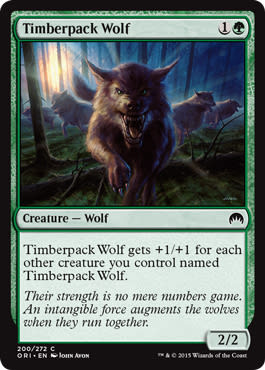 | ||
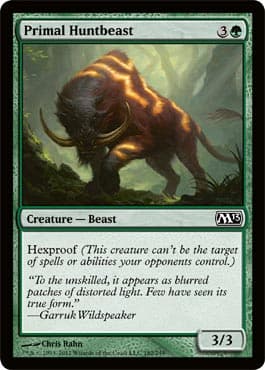 |
Follow those up with a few Fire Elementals and Sentinel Spiders, and a board of normal creatures is done for.
Not that I’m claiming this deck is too good. To compensate for its existence, there are five cheap (5 or less mana) commons with 4 or more toughness, but having a metric ton of beefy creatures is nonetheless an enticing proposition for a beatdown deck.
Cards
With Draft decks over and done, let’s take a look at some of the more interesting card-by-card choices made for this core set:
Even though there’s a lot to talk about here, I want to address these four cards together because they suggest the false premise that more is better. It’s true that a lot of players only buy a few packs of product and aren’t likely to see the rares you design. It’s also true that Dragons are a great way to get new players hooked on Magic. That’s still no excuse to stick both Dragon Hatchling and Furnace Whelp in a set.
First of all, I don’t think that baby Dragons are actually exciting. I understand that others believe differently, but the draw of hatchlings is that the little thing in your hands will one day be an enormous terror of the skies. Fledgling Dragon and Hellkite Hatchling deliver on that promise, but the Dragon Whelp family falls flat.
Even ignoring that, having all of these Dragons simply makes them too common. It takes away from the beasts’ majesty when the average Draft pool has more than four of them. I think Magic 2012 did things right with a fully grown uncommon Dragon and a rare Dragon in the red intro pack. Krenko, Mob Boss made that course of action impossible, and future Duels of the Planeswalkers tie-ins may do the same in the future, but the current approach just doesn’t do it for me.
I’m much more partial toward the rares. They’re both good designs, and though normally I wouldn’t put them in a set together because they’d exclude a classic fire-breathing Dragon, once I’ve accepted the Whelps, this setup makes sense. Also, how is Elder Land Wurm the only previous use of the sleeping-dragon trope? I’m glad somebody’s on top of that.
I didn’t realize this card was a reprint from Mercadian Masques initially because it’s such an exemplar of modern design sensibilities. There are basically two ways to go about making an uncommon to be built around. You can go the Burning Vengeance route where the card does nothing in a normal deck but allows the pilot to play in a whole new way. That’s fantastic for keeping formats fresh, but it also makes for some awkward drafting when you don’t get to play with your cool cards if the deck doesn’t come together.
Arms Dealer, on the other hand, is always playable as a sort of Turn to Slag on his own, but picking one up early in the Draft gives a player direction in the same way that Elvish Archdruid does. Every set wants a few cards like that to help new drafters get started, and simultaneously pushing those players to take a strong card is a win-win in my book.
Working on the Goblin Artisans M13 project, we spent a lot of time discussing various designs for a Phoenix that kept coming back, mostly as a triggered ability upon dying. We decided that the gameplay would be too repetitive on a cheap creature that couldn’t be raced and that a Phoenix shouldn’t have big enough stats to warrant the higher cost that might give aggression a chance. The activation cost on this card makes it harder to recast every turn, but my limited interaction with it thus far has done little to change my opinion on the matter.
I know, I know, I defended the same thing out of Xathrid Gorgon two weeks ago. Well, I was wrong. I gave that card a pass because it’s a rare and thus shows up less often in Limited, but when Jonathan Woodward asked about my differing opinions on Xathrid Gorgon and Blood Reckoning, I ran the numbers. The chance of seeing at least one copy of a given large-set uncommon in a Draft pod is only about double that of a rare (71% and 37% respectively). At only 18%, a Mythic might get a pass, but rares need to do something pretty important elsewhere to justify destroying Limited games.
Somewhere That’s Green
And that’s where I’ll call it for this week. Remember to get your submissions for the planeswalker design contest e-mailed to julesdrobins at gmail dot com before the midnight leading into Tuesday, August 14 (East coast time) because next week, we’ll be looking at the winners! As of this writing, I’ve already received a lot of great entries, and I’m looking forward to seeing what the rest of you cook up in the meantime.













